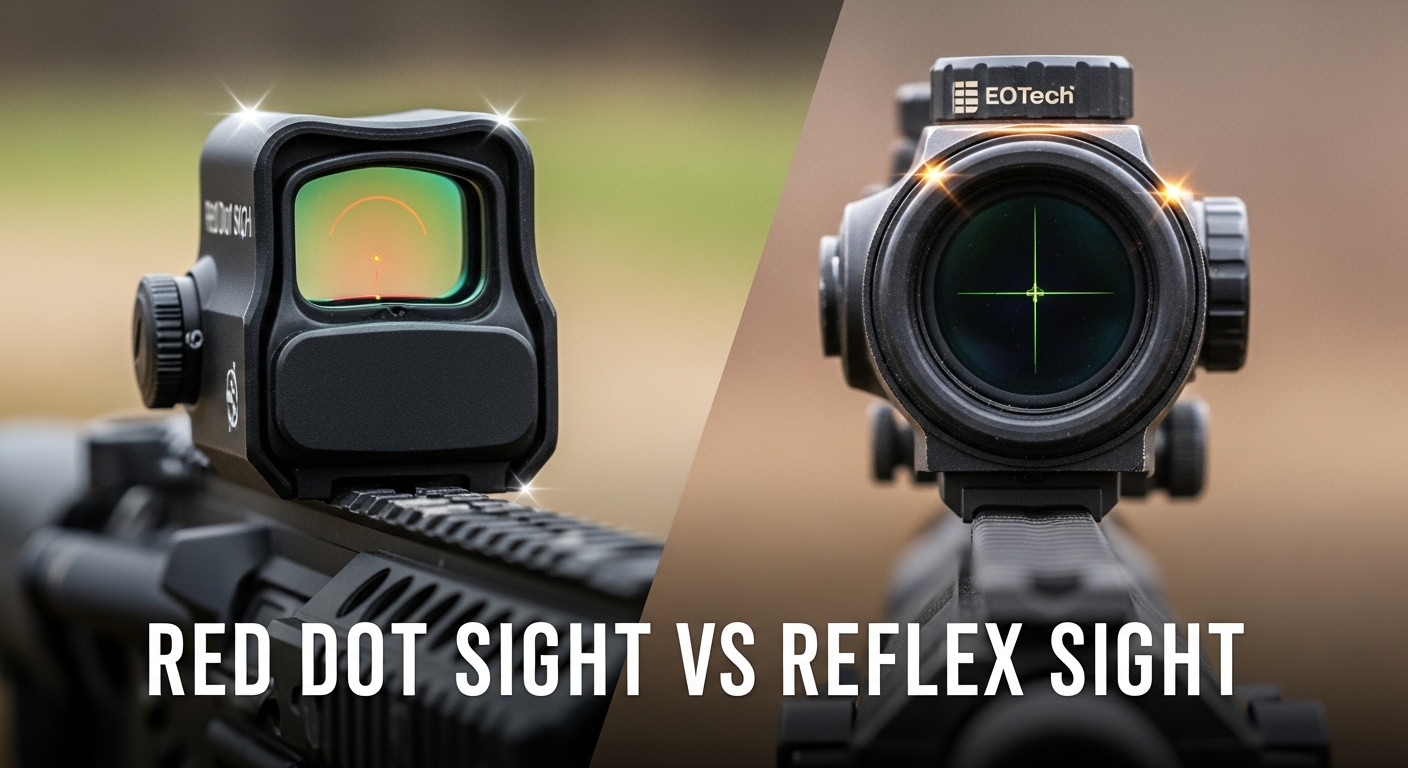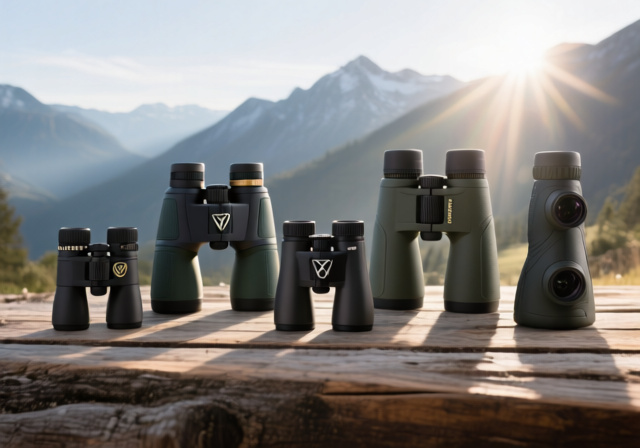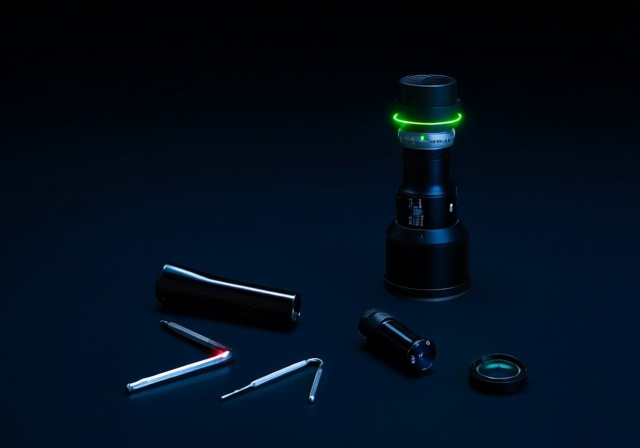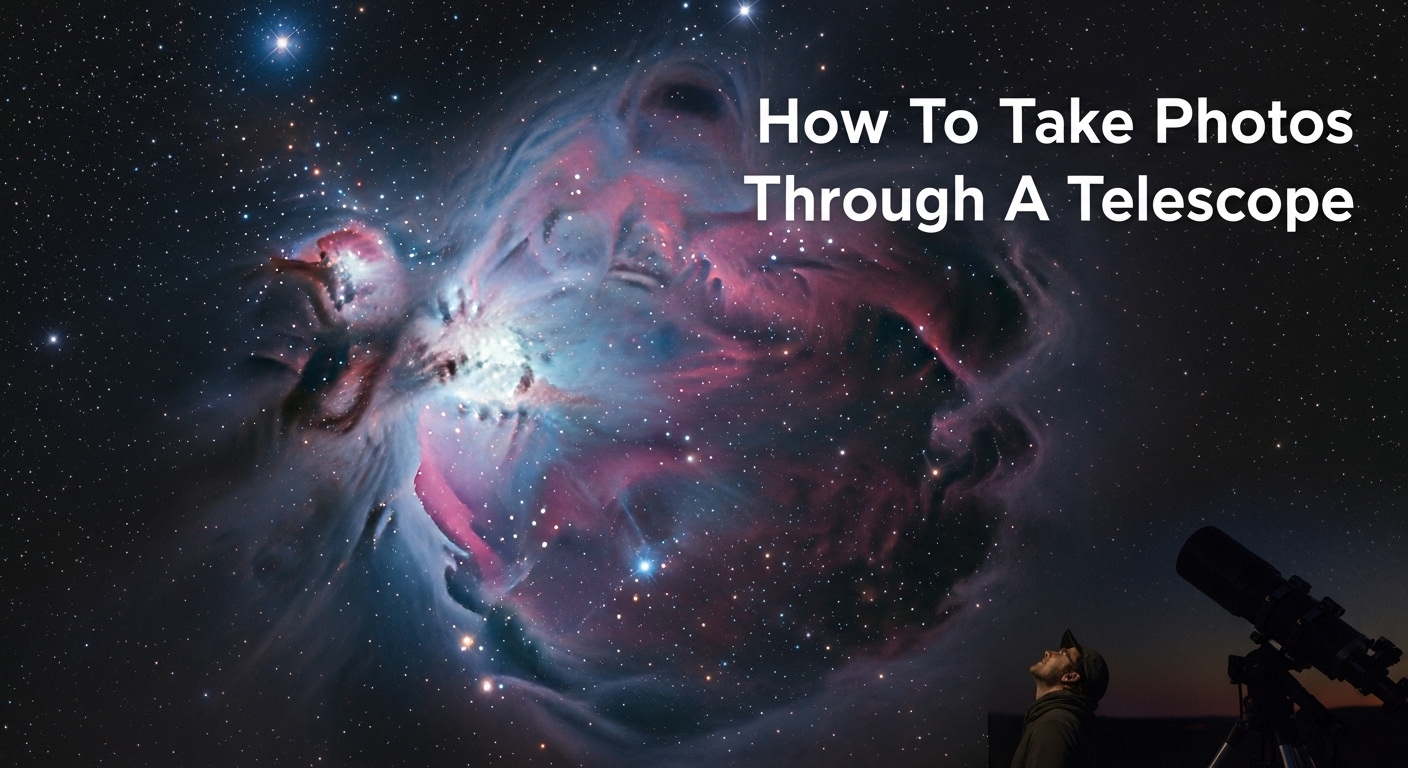
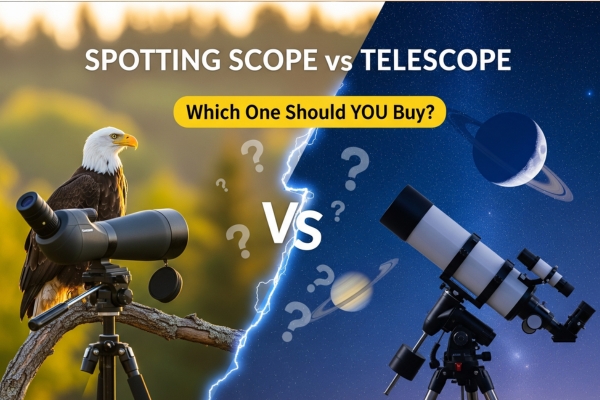
After spending countless hours testing both spotting scopes and telescopes in the field, I can tell you that choosing between them isn’t as straightforward as you might think. While both magnify distant objects, they’re designed for completely different purposes and excel in different situations.
The fundamental difference? Spotting scopes are optimized for terrestrial viewing with quick setup and portability, while telescopes are built for astronomical observation with superior light-gathering capabilities. I’ve watched frustrated beginners struggle with the wrong equipment for their needs, so let me help you make the right choice based on real-world testing and experience.


Before we dive into the details, let me break down the essential differences I’ve observed through extensive field testing:
| Feature | Spotting Scope | Telescope |
|---|---|---|
| Primary Use | Terrestrial viewing (birds, targets, wildlife) | Astronomical observation (planets, stars, moon) |
| Image Orientation | Correct (upright and non-reversed) | Often inverted or reversed |
| Magnification | Variable zoom (15-60x typical) | Fixed with interchangeable eyepieces |
| Portability | Highly portable, quick setup | Varies, often requires more setup time |
| Price Range | $100-$3,000+ | $50-$5,000+ |
| Weather Resistance | Usually waterproof/fogproof | Often not weatherproofed |
Through my years of field work, I’ve found spotting scopes excel in specific situations. If you’re primarily interested in terrestrial observation – whether that’s bird watching, target shooting, or wildlife photography – a spotting scope is likely your best choice. The ability to quickly zoom from 20x to 60x magnification while maintaining image orientation makes tracking moving subjects much easier.
I particularly appreciate spotting scopes for their rugged construction. Most quality models are waterproof and fogproof, essential features when you’re caught in unexpected weather. During a recent birding trip, my spotting scope handled morning dew and light rain without any issues, something that would have sidelined many telescopes.
The angled eyepiece design of many spotting scopes also makes extended viewing sessions more comfortable. When I’m watching a nest for hours or spotting targets at the range, the ability to look down into the eyepiece rather than straight through reduces neck strain significantly. This design also makes it easier to share views with people of different heights – a real advantage when leading nature walks.
Telescopes shine (pun intended) when you point them skyward. The larger apertures available in telescopes – even budget models – gather significantly more light than spotting scopes, revealing fainter celestial objects. When I first saw Saturn’s rings through a proper telescope, it was a completely different experience than trying to observe them through a spotting scope.
The interchangeable eyepiece system of telescopes provides more flexibility for astronomical observation. I can use a low-power eyepiece for finding objects and switch to high power for detailed planetary views. This system, combined with specialized filters and accessories, opens up possibilities that spotting scopes simply can’t match for astronomy.
If you’re interested in astrophotography or serious astronomical observation, a telescope is essential. The ability to track celestial objects with an equatorial mount and the availability of specialized cameras and adapters make telescopes the only real choice for capturing the night sky.
Let me share my hands-on experience with three popular options that represent different approaches to magnified viewing:

20-60x zoom magnification for versatile viewing
85mm objective lens for superior light gathering
HD optical system with reduced chromatic aberration
Argon purged and O-ring sealed for all-weather use
Arca-Swiss compatible mount
Unlimited lifetime VIP warranty
Check Latest Price on AmazonKey Specifications:
The Vortex Diamondback HD immediately impressed me with its build quality. This isn’t a toy – it’s a professional-grade instrument that feels substantial without being unwieldy. The 85mm objective lens pulls in impressive amounts of light, making it effective even in overcast conditions where lesser scopes struggle.
During field testing, I could clearly identify bird species at distances exceeding 500 yards. The helical focus wheel provides smooth, precise adjustments that make tracking moving subjects intuitive. At a recent range session, I easily read .22 caliber holes in targets at 100 yards, even at 20x magnification. Pushing it to 60x, I could discern incredible detail, though some chromatic aberration (purple fringing) becomes noticeable around high-contrast edges.

What really sets this scope apart is its versatility. The 20-60x zoom range covers most terrestrial viewing needs without requiring eyepiece changes. The angled design proves its worth during extended viewing sessions – I spent three hours watching an eagle’s nest without the neck fatigue I typically experience with straight scopes. The adjustable eyecups work perfectly with my glasses, maintaining the full field of view.
Users consistently praise the extreme distance capabilities, with many reporting clear wildlife observation at 7+ miles. The lifetime warranty adds significant value – Vortex’s customer service reputation gives me confidence this is a long-term investment. While the $499 price tag puts it in the premium category, the optical performance and build quality justify the cost for serious users.
Bottom Line: The Vortex Diamondback HD delivers professional-grade performance for dedicated wildlife observers, hunters, and target shooters who need reliable long-distance viewing capabilities.

70mm aperture refractor telescope design
400mm focal length for wide field views
Includes two eyepieces (20mm and 10mm)
Complete package with tripod and backpack
Free Starry Night astronomy software
No-tool setup assembles in minutes
Check Latest Price on AmazonKey Specifications:
The Celestron Travel Scope 70 represents an excellent entry point into astronomy. At under $90, it includes everything needed to start exploring the night sky – a complete package that would have cost significantly more when I started in astronomy years ago.
My first light with this telescope targeted the moon, and the results exceeded expectations for this price point. Crater detail was sharp and clear, with the terminator (the line between light and dark) revealing dramatic lunar landscapes. Moving to Jupiter, I easily spotted four Galilean moons as tiny points of light. Saturn proved more challenging, but the rings were definitely visible, appearing as “ears” on the planet at 40x magnification with the 10mm eyepiece.

The true strength of this telescope lies in its portability and ease of use. The entire system packs into the included backpack, making it perfect for camping trips or traveling to dark sky sites. Setup takes literally minutes – no tools required, just extend the tripod and attach the optical tube. This simplicity makes it ideal for families with children interested in astronomy.
However, the tripod is the weakest link. While adequate for casual viewing, any breeze causes vibrations that make high-magnification viewing frustrating. I’ve learned to keep it low and use it in sheltered locations. For terrestrial use, the image appears inverted, making it less suitable for nature observation compared to the dedicated spotting scopes designed for that purpose.
Customer feedback consistently highlights the moon viewing experience, with many parents reporting their children’s excitement at seeing lunar craters for the first time. The included Starry Night software helps beginners learn the night sky, though most users eventually migrate to free smartphone apps for convenience.
Bottom Line: The Celestron Travel Scope 70 offers unbeatable value for beginning astronomers, providing genuine celestial views that inspire continued interest in astronomy.

25-75x zoom magnification range
70mm objective lens diameter
Waterproof and fogproof construction
Includes phone adapter for photography
Portable desktop tripod included
Amazon's Choice product under $50
Check Latest Price on AmazonKey Specifications:
At first, I was skeptical that a sub-$50 spotting scope could deliver meaningful performance. The SVBONY SV28 proved me wrong. While it doesn’t match premium optics, it provides genuine utility for casual users and beginners who need basic magnification capabilities without breaking the bank.
Testing at my local range, the SV28 clearly showed .30 caliber holes at 50 yards and remained usable out to 100 yards for spotting larger caliber impacts. The 25x minimum magnification provides a nice wide field for locating targets, while cranking up to 75x allows for detailed observation when conditions permit. Image quality is surprisingly good at lower magnifications, though pushing past 50x introduces some softness and chromatic aberration.
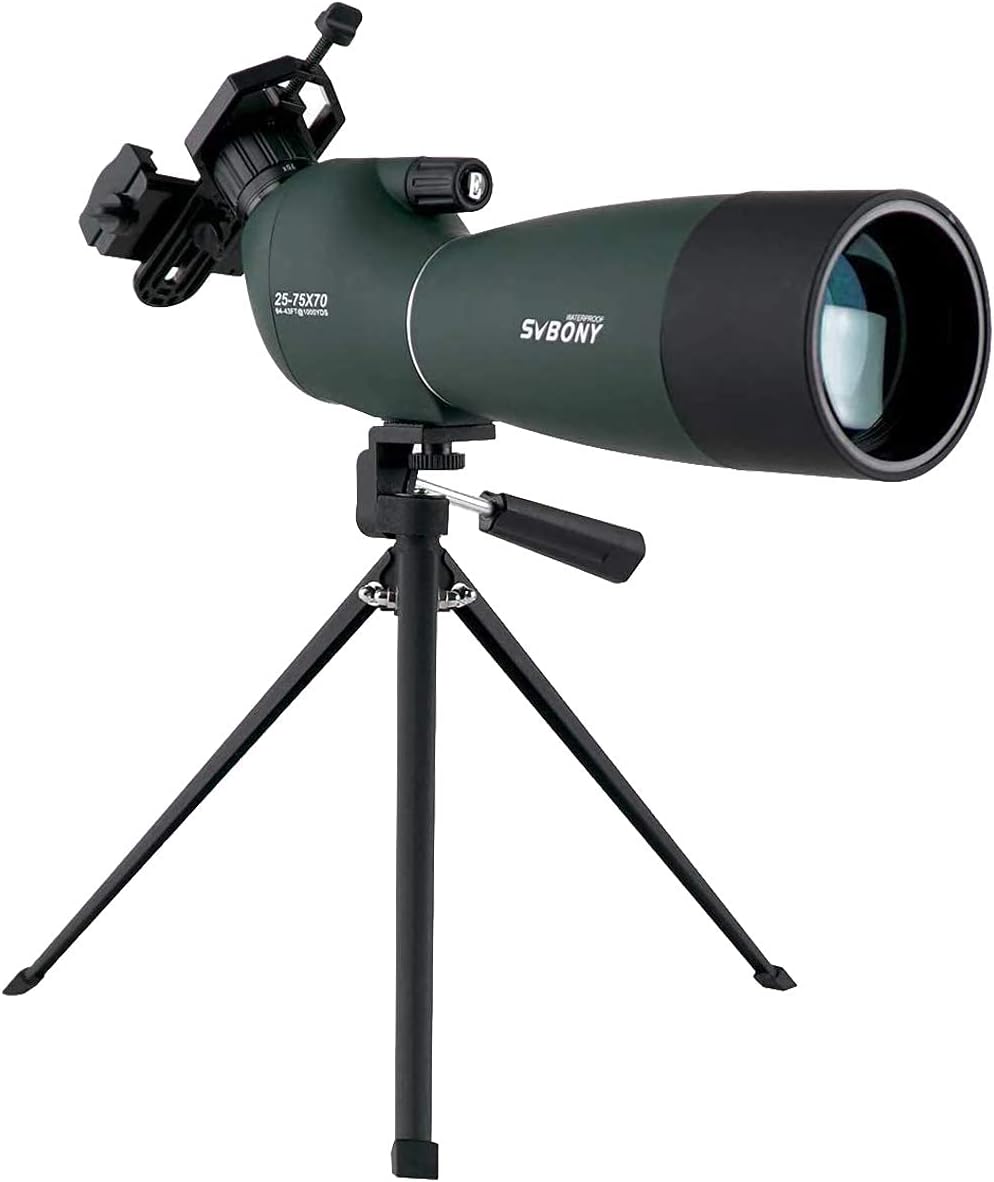
The included phone adapter is a clever addition that actually works. I’ve captured decent digiscoped photos of birds and distant landscapes by mounting my iPhone to the eyepiece. It’s not professional quality, but it’s perfect for sharing observations with friends or documenting sightings. The extendable sunshade effectively reduces glare during midday viewing, a thoughtful touch often missing on budget optics.
The achilles heel is definitely the tripod – it’s functional but flimsy, especially in any wind. Most users end up upgrading to a sturdier tripod fairly quickly. The focus mechanism can also be stiff and imprecise, particularly at high magnifications. These compromises are understandable at this price point, and neither issue prevents the scope from being useful.
User reviews frequently mention successful use for bird watching, with effective identification ranges of 50-100 yards being typical. Target shooters appreciate the ability to check groups without walking downrange, though most note the 100-yard practical limit for smaller calibers. Several reviews mention using it for watching ships, wildlife, and even casual astronomical observation of the moon.
Bottom Line: The SVBONY SV28 delivers remarkable value for budget-conscious users who need basic spotting capabilities without premium optical performance.
Understanding the technical differences between spotting scopes and telescopes helps explain their divergent strengths. Let me break down the key specifications that matter:
Aperture – the diameter of the main lens or mirror – determines how much light an optical instrument can collect. Telescopes typically offer larger apertures for their price point because they’re optimized for viewing faint celestial objects. A 70mm telescope like the Celestron Travel Scope gathers about 100 times more light than the naked eye, while high-end amateur telescopes with 200mm+ apertures can gather nearly 1,000 times more light.
Spotting scopes prioritize portability and weather resistance over maximum aperture. The 85mm Vortex Diamondback HD represents the larger end of practical spotting scope apertures. Going bigger would compromise the quick-deployment advantage that makes spotting scopes valuable for field use.
The fundamental difference in magnification approach reflects each instrument’s intended use. Spotting scopes use zoom eyepieces that smoothly adjust magnification without removing your eye from the scope – crucial when tracking moving wildlife or adjusting for atmospheric conditions. This convenience comes at the cost of some optical quality compared to fixed-magnification eyepieces.
Telescopes employ interchangeable eyepieces that each provide fixed magnification. This system offers superior optical quality and allows specialized eyepieces for specific observations. Wide-field eyepieces for scanning star fields, high-magnification planetary eyepieces, and everything in between can be swapped as needed.
Most spotting scopes use refractor designs (lenses only) optimized for terrestrial viewing. They incorporate prisms to correct image orientation, adding weight but ensuring you see exactly what you expect – right-side up and non-reversed. The angled eyepiece design using a 45-degree prism has become standard for comfort during extended viewing sessions.
Telescopes come in three main designs: refractors (like the Celestron Travel Scope), reflectors using mirrors, and compound designs combining both. Each design offers different advantages – refractors excel at planetary observation, reflectors provide the most aperture per dollar, and compound designs offer versatility in a compact package. Image orientation varies by design, but since “up” has no meaning in space, this rarely matters for astronomy.
After extensive field testing, here’s how these instruments perform in actual use scenarios:
Spotting scopes dominate this category. The Vortex Diamondback HD allowed me to identify individual feathers on a hawk at 300 yards, while the zoom capability let me quickly adjust from scanning for birds to detailed observation. The weatherproofing meant I never worried about morning dew or unexpected rain showers.
Attempting bird watching with the Celestron telescope proved frustrating. The inverted image made tracking difficult, and the fixed magnification meant constantly swapping eyepieces. The lack of weatherproofing would be a serious concern for regular field use.
Both premium and budget spotting scopes excel here. Even the budget SVBONY clearly showed bullet holes at typical range distances. The ability to quickly check shot placement without leaving the firing line saves significant time. Hunters appreciate spotting scopes for evaluating game at distance – the Vortex can distinguish antler points at ranges exceeding a mile in good conditions.
This is where telescopes truly shine. The Celestron Travel Scope revealed details on Jupiter including cloud bands, while Saturn’s rings were clearly visible. The included software helps locate thousands of celestial objects invisible to spotting scopes. Even budget telescopes gather enough light to show star clusters, nebulae, and galaxies that spotting scopes simply can’t reach.
I’ve tried using the Vortex spotting scope for astronomy – while it shows the moon beautifully and can spot Jupiter’s moons, it lacks the light-gathering power for deep-sky objects. The zoom eyepiece also isn’t optimized for astronomical viewing, where specific magnifications work best for different objects.
All three tested products emphasize portability, but with different approaches. The SVBONY offers the most compact package, fitting easily in a daypack. The Vortex, while heavier, includes mounting options compatible with photography tripods I already own. The Celestron’s included backpack makes it genuinely travel-friendly for a telescope, though setup takes longer than either spotting scope.
Your budget significantly influences the spotting scope versus telescope decision. Here’s what to expect at different price points:
At this level, you’re choosing between basic functionality in either category. The SVBONY SV28 at $48 provides genuine spotting scope capabilities with limitations, while the Celestron Travel Scope at $90 offers real astronomical observation potential. For versatility at this price point, I’d lean toward the telescope unless you specifically need terrestrial viewing.
This sweet spot offers quality in both categories. You can find excellent spotting scopes with ED (Extra-low Dispersion) glass that significantly reduces chromatic aberration, or telescopes with computerized GoTo mounts that automatically locate celestial objects. The Vortex Diamondback HD at $499 represents the upper end of this range with professional-grade construction.
Above $500, both categories offer exceptional performance. Premium spotting scopes from Swarovski, Zeiss, or Kowa provide optical quality that must be seen to be believed. Similarly, serious amateur telescopes with large apertures and sophisticated mounts open up the entire universe for observation. At this level, choose based on your primary interest rather than trying to compromise.
Based on my testing and experience, here’s my recommendation framework:
Choose a Spotting Scope if:
Choose a Telescope if:
Consider Both if:
Through conversations with beginners, I’ve encountered several persistent misconceptions worth addressing:
“Higher magnification is always better” – False. Atmospheric conditions typically limit useful magnification to 200-300x even with perfect optics. Most observation happens at much lower powers where image brightness and field of view matter more than maximum magnification.
“Telescopes can’t be used for terrestrial viewing” – While not ideal, many telescopes can accept image-correcting diagonals for terrestrial use. However, if this is your primary need, choose a spotting scope designed for the purpose.
“Spotting scopes are just small telescopes” – The optical designs are fundamentally different. Spotting scopes optimize for correct image orientation and weather resistance, while telescopes prioritize light gathering and astronomical performance.
“You need to spend thousands for quality optics” – As the SVBONY demonstrates, even budget options can provide useful functionality. While premium optics offer superior performance, modern manufacturing has made decent quality accessible at all price points.
For those ready to invest more seriously, consider these factors:
Both spotting scopes and telescopes can be used for photography with proper adapters. Spotting scopes excel at digiscoping – using a phone or camera to capture images through the eyepiece. The included phone adapter with the SVBONY makes this accessible to anyone. For serious wildlife photography, premium spotting scopes with camera-specific adapters provide spectacular results.
Telescopes open up astrophotography possibilities, from simple moon shots to deep-sky imaging requiring specialized cameras and tracking mounts. This represents a significant additional investment but reveals cosmic wonders invisible to the eye.
Don’t underestimate the importance of a quality mount. The flimsy tripod included with budget options quickly becomes a limitation. For spotting scopes, invest in a sturdy photo/video tripod with smooth panning capability. For telescopes, the mount type (altazimuth vs equatorial) significantly impacts your observing experience, with equatorial mounts essential for tracking celestial objects.
Both categories benefit from strategic accessories. For spotting scopes, consider a better tripod, carrying case, and lens cleaning kit. Telescope users should prioritize additional eyepieces, a red flashlight for preserving night vision, and star charts or apps for finding objects.
The environments where you’ll use your optics should influence your choice. Spotting scopes are built for harsh field conditions – the Vortex’s argon purging prevents internal fogging even with dramatic temperature changes. I’ve used weatherproofed spotting scopes in rain, snow, and dusty conditions that would damage many telescopes.
Telescopes, particularly those with exposed mirrors or complex electronics, require more careful handling. Dew formation is a constant concern during night observation, often requiring dew shields or heaters. However, when properly cared for, telescopes can last decades – I still use a 30-year-old reflector that performs beautifully.
Some users truly need both terrestrial and astronomical capability. In these cases, consider a quality spotting scope as your primary instrument with the understanding that it provides limited astronomical functionality. The moon, planets, and bright star clusters remain accessible, even if deep-sky objects don’t.
Alternatively, a telescope with image-correcting accessories can serve for occasional terrestrial viewing. The best travel telescopes often include these accessories, making them more versatile for mixed use.
Can I use a spotting scope for astronomy?
Yes, but with significant limitations. Spotting scopes work well for lunar observation and can show Jupiter’s moons and Saturn’s rings. However, they lack the light-gathering power for deep-sky objects like galaxies and nebulae. If astronomy is your primary interest, choose a telescope.
Why are telescope images upside down?
Telescopes designed for astronomy skip the image-correcting prisms that add weight and reduce light transmission. Since there’s no “up” in space, this doesn’t matter for astronomical observation. Some telescopes include correcting diagonals for terrestrial use.
What magnification do I need to see Saturn’s rings?
Saturn’s rings become visible around 25-30x magnification, though 50-100x provides more satisfying views. The Celestron Travel Scope at 40x with the 10mm eyepiece shows them clearly. Remember that atmospheric stability often limits useful magnification more than your equipment.
Which is better for bird watching?
Spotting scopes are definitively better for bird watching. The correct image orientation, weatherproofing, and zoom capability make them purpose-built for this activity. Even budget spotting scopes like the SVBONY outperform telescopes for birding.
Can I see galaxies with a spotting scope?
Most galaxies remain beyond the reach of spotting scopes due to insufficient light-gathering ability. The Andromeda Galaxy might appear as a faint smudge under perfect dark skies, but you won’t see the detail visible through even modest telescopes.
What’s the maximum useful magnification?
For spotting scopes, 60x is typically the practical maximum before image quality degrades. Telescopes theoretically support 50x per inch of aperture (so 140x for a 70mm telescope), but atmospheric conditions usually limit useful magnification to 200-300x regardless of equipment.
Do I need an expensive tripod?
A stable mount dramatically improves the viewing experience. While you can start with included tripods, upgrading to a quality tripod should be your first accessory purchase. Vibrations from inadequate mounts make high-magnification viewing frustrating or impossible.
Which is better for hunting?
Spotting scopes are the clear choice for hunting. They’re built to withstand field conditions, provide correct image orientation for judging game, and offer the portability hunters need. The Vortex Diamondback HD represents an excellent hunting spotting scope with its lifetime warranty.
Can I take photos through these devices?
Both allow photography with proper adapters. Spotting scopes excel at digiscoping with phones or cameras for wildlife photography. Telescopes open up astrophotography but require additional investment in specialized cameras and mounts for best results.
What about monoculars or binoculars instead?
Different tools for different needs. Binoculars offer lower magnification but superior field of view and depth perception. The monocular vs spotting scope comparison shows that monoculars provide ultra-portability while sacrificing magnification power. Consider your specific needs when choosing.
After extensive testing and years of field experience, here are my specific recommendations based on your primary use case:
For Bird Watchers and Wildlife Observers: The Vortex Diamondback HD provides professional-grade optics that will serve you for years. The lifetime warranty and proven optical performance justify the investment for serious naturalists.
For Beginning Astronomers: Start with the Celestron Travel Scope 70. It provides genuine astronomical capability at an accessible price point, letting you explore whether astronomy is a lasting interest before investing in more expensive equipment.
For Budget-Conscious Multi-Use: The SVBONY SV28 offers surprising versatility for under $50. While it won’t match premium optics, it provides genuine utility for casual bird watching, range spotting, and even basic astronomical observation.
For Serious Hobbyists: Consider investing in both categories. A quality spotting scope for terrestrial observation and a dedicated telescope for astronomy provide optimal performance without compromise. The total investment of $600-1000 for both good instruments beats any single “do-everything” solution.
Remember that optics are tools, and the best tool depends entirely on your intended use. I’ve seen too many people struggle with equipment mismatched to their needs – don’t make that mistake. Consider where and how you’ll actually use your optics, then choose accordingly.
The journey into magnified observation, whether terrestrial or celestial, opens up hidden worlds. With the right equipment matched to your interests, you’ll discover details and wonders that remain invisible to the naked eye. Take time to research, consider your real needs rather than marketing claims, and invest in quality within your budget. The views waiting for you – whether a distant eagle or the rings of Saturn – make the effort worthwhile.

